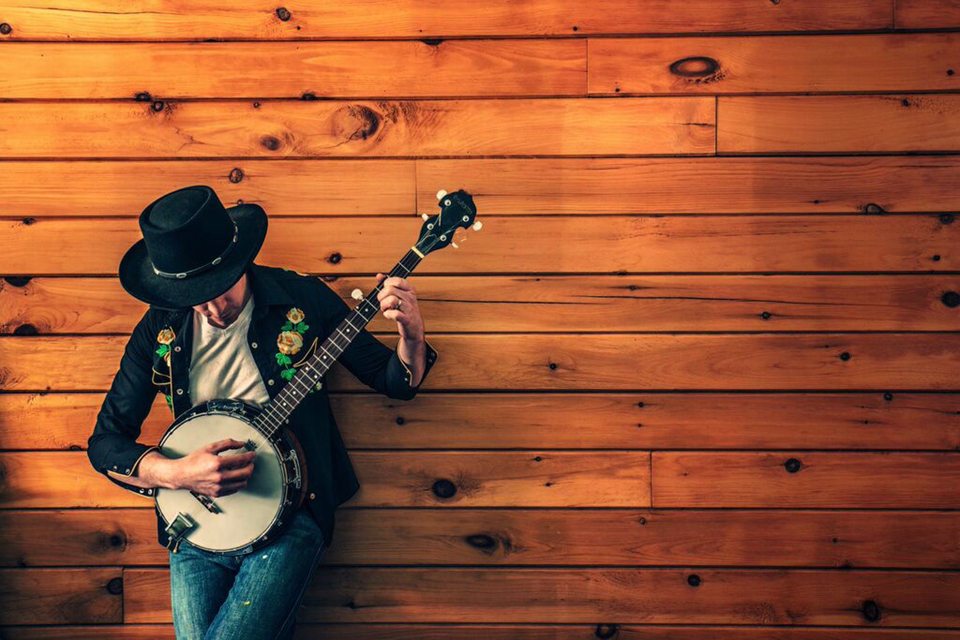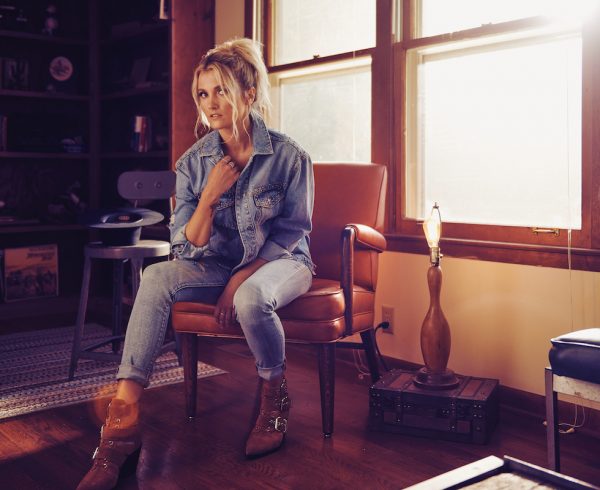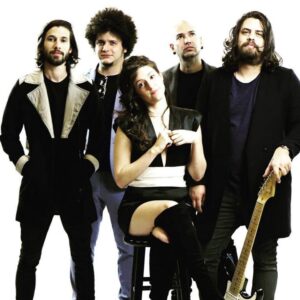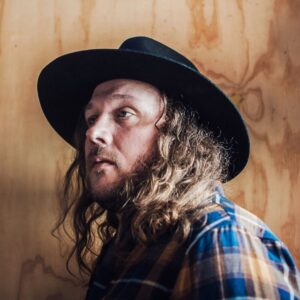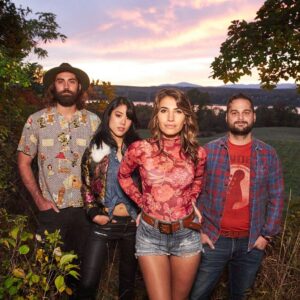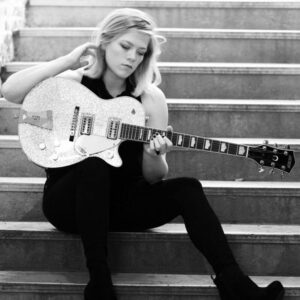Becoming Music City
According to legend, it was during country and western star Red Foley’s show on the Grand Ole Opry that radio announcer David Cobb informed listeners around the world that they were enjoying the sounds of “Music City, USA.” The year was 1950 and the phrase became the most enduring slogan of this middle-sized, middle-South town until 2013 when The New York Times dubbed Nashville America’s newest “It City.”
Those who are drawn to Nashville for its famous strip of honkytonks on Lower Broadway prefer “NashVegas,” with a tip of the rhinestone-encrusted cowboy hat to the unrestrained pursuit of a certain kind of bedazzled and besotted, battered-and-fried “glamour,” while those who like to get their crunk on in the Dirty, Dirty South opt for “Cashville” from rapper Young Buck’s Platinum-selling 2004 album.
Ryman, WSM and The Grand Ole Opry
In the early years, Nashville’s location on the Cumberland River, with access to the Mighty Mississippi via the Ohio, helped make it a center for both trade and travel. Native son and steamboat captain Tom Ryman maintained a fleet of 35 riverboats, each replete with bars, casinos and the attendant dancing girls.
Enter lawyer and drunkard-turned-evangelist Sam Jones, traveling the South in the spring of 1885 with his big tent rival, preaching against the evils of alcohol, dancing and baseball. A few nights into Jones’s three-week stand in Nashville, Ryman, concerned that too much religion might not be good for the booze and gambling trade, gathered a group of roustabouts and proceeded to give the good reverend a good heckling.
By the end of the service, Ryman was a believer and a teetotaler, and had committed to building Jones a permanent home for his ministry. Seven years and $100,000 later ($2,633,704 in 2015 dollars), the 2,400-seat Victorian Gothic Union Gospel Tabernacle became not only a house of worship, but one of the South’s leading venues for educational and cultural uplift. By the early 1900s, the hall had been renamed the Ryman Auditorium and had hosted appearances by the New York Metropolitan Opera, Sarah Bernhardt, Caruso, Houdini, Will Rogers, Marian Anderson, Charlie Chaplain, W. C. Fields, John Philip Sousa and Presidents Teddy Roosevelt and William Taft.
Meanwhile, local insurance concern, the National Life and Accident Insurance Company, had begun broadcasting a weekly stage show from their 1,000-watt radio station, WSM-AM. Known as “The WSM Barn Dance” and later “The Grand Ole Opry,” the broadcast featured live performances from regional musicians.
Within a few years, the station was beaming the biggest stars in country music from the tallest radio tower in the world, and the Opry was a Saturday night musical tradition in more than 30 states. Although wildly popular, the entire show was actually one continuous advertisement, with announcers plugging life insurance policies and compatible products between songs to both the live and radio audiences. Never had entertainment and commerce danced so deftly together, and by 1943 the Opry had made the Ryman Auditorium its permanent home. From “The Mother Church of Country Music,” the Ryman and WSM paved the way for Nashville to become America’s country music capital.
Music Row
Musicians flocked to Nashville to appear on the Opry, and astute entrepreneurs began to create businesses to exploit their talent. WSM Music Director Owen Bradley installed a recording studio in an Army surplus Quonset hut attached to his brother’s house on 16th Avenue and in short order they cut hit records by Patsy Cline, Brenda Lee, Loretta Lynn, Conway Twitty, and Buddy Holly. Next followed RCA Studio B (Elvis Presley, Chet Atkins, Eddy Arnold, and the Everly Brothers) and RCA Studio A (Dolly Parton, Tony Bennett, Willie Nelson, The Oak Ridge Boys). Columbia built three studios in the area and recorded hits for Johnny Cash, Roger Miller, Charlie Rich, Tammy Wynette, and George Jones.
With the success of the studios, other supporting businesses sprang up along 16th and 17th Avenues, soon referred to as “Music Row.” Record labels, publishing houses, talent agents, music licensing firms, entertainment attorneys, publicity firms and radio networks opened offices. Prior to this time, country music had been made and marketed in Chicago, New York, Atlanta and Memphis. By 1950, The Opry and Music Row had solidified Nashville’s claim to the title “Music City.”
Music remains one of Nashville’s highest-profile offerings, however the modern metropolis could just as justifiably be called “Health Care City” or “Higher Education City” or “Finance and Insurance City.” Nashville’s economy, which is expected to cross the $100 billion mark for the first time this year, is founded on a diverse mix of health care, higher education, insurance, tourism, automotive manufacturing, finance, publishing, technology, and entertainment. The music industry is estimated to have a $9.65 billion annual economic impact on the Nashville region, and more than 55,000 Nashvillians insist on trying to make a living making music.
Becoming ‘It’
Seminal gospel rocker Sister Rosetta Tharpe observed that “strange things are happening every day,” perhaps none stranger than when The New York Times recently hailed Nashville as the new “It City.” Prudent culture-watchers understand that’s about as helpful as being called “the next Dylan” (ask Portland, Austin and Brooklyn.)
The eyes of the world began taking a second look at Nashville in the spring of 2009 when The Atlantic posited a “Nashville Effect,” noting that during the period from 1970 to 2004 Nashville had “sucked up all the growth in the music industry,” leaving New York and L.A. to cry into their guitar cases.
Later that same year, The New York Times travel section urged the perambulatory class to check out new parts of town like East Nashville and 12 South, with their “lively bars, stylish restaurants and a young, eclectic crop of music makers, churning out everything from Bluegrass to Punkabilly.”
In 2010, the pop culture and fashion arbiters at Nylon magazine touted Nashville’s “thriving community of designers, artists and entrepreneurs who have turned it into the coolest city you’ve never visited.” In 2011, Rolling Stone gave Nashville the nod for “Best Music Scene,” while the financial heavyweights at Forbes predicted Nashville was on the path to becoming one of the next big boom towns in the U.S.
Even the international press got into the act in 2012 when London’s Observor, in a feature touting East Nashville’s Garage Punk scene, reported that “there are more thrilling new bands in East Nashville than anywhere else on earth.” GQ fawned that Nashville was the site of “the most stylish party in America” and Bon Appétit anointed Nashville “The Coolest, Tastiest City in the South.” When the Times declared Nashville “It,” one had to wonder, “What could cause a town to move from hayseed to first seed with such élan?”
Some observers date Nashville’s incipient emergence from the cultural boondocks to 1997 when Nathan and Caleb Followill of the platinum-selling rock band, King’s of Leon, moved to town.
Since then, a wave of non-country immigration has created a music scene that reaches far beyond the glitz ‘n’ grins of Porter Wagoner and Minnie Pearl. In 2003, alternative rocker Ben Folds folded “The Five” and took up residence in Nashville’s famous RCA Studio A. Aussies Nicole Kidman and Keith Urban came in 2006, bringing both a different kind of accent and a different level of celebrity to town.
In 2007 California chanteuse Sheryl Crow bought 150 acres to pasture her chickens, dogs, donkeys, horses and two Texas longhorn cows.
In 2009, when the Jack White juggernaut made its way down I-65 from Detroit it arrived with three bands (The White Stripes, The Raconteurs and The Dead Weather) and an impossibly hip label/venue/retail outlet, Third Man Records.
Rust Belt rockers the Black Keys decamped from Akron, Ohio in 2011 to search for warmer climes and a more vibrant creative community, and in 2012 the city, itself, became a star when Hollywood screenwriter/producer/director Callie Khouri brought her prime-time soap, Nashville, to ABC TV.
The Taste of Success
With all that culture and all that music, people gotta eat, and thankfully creative chefs from near and far stepped up to the table. It can be said that the local foodie scene was presaged back in 1907 when a visiting President Teddy Roosevelt is purported to have made his famous quip that Nashville’s Maxwell House coffee was “good to the last drop.” Contemporary coffee connoisseurs can now endure lines as long as a hipster’s tattoo sleeve to quaff gourmet brew at places like Barista Parlor, Crema, Bongo Java and Frothy Monkey.
Nashville’s venerable “meat-and-three” tradition (a selection of southern favorites like fried chicken, country ham and meatloaf, accompanied by your choice of three sides such as greens, mac and cheese and creamed corn) can still be enjoyed in all its unsophisticated glory at favorites like Arnold’s, Monell’s, the Copper Kettle, and the Nashville Biscuit House. But you can also partake of some fine fine dining at new culinary destinations such as Husk, Rolf & Daughters, City House, Lockeland Table, and the Catbird Seat.
Some of Nashville’s best new eats come on wheels. Drive for 10 minutes in any direction and you’ll find such street-side purveyors as Bao Down (Chinese), King Tut’s (Middle Eastern), Riff’s (Korean BBQ), Music City Rice and Roll (Filipino), The Waffle Boss (chicken and waffles), The Grilled Cheeserie, and the Music City Pie Company.
If you visit, don’t miss Middle Tennessee’s singular gastronomical adventure, Nashville Hot Chicken. This deep-fried, cayenne-fired delectation is served with pickles, a slice of white bread, and plenty of napkins. Prince’s Hot Chicken Shack in East Nashville started it all, but you can get a pretty good burn going on at Bolton’s and Hattie B’s, as well.
Looking for some southern barbecue? Does a pig hunt truffles? Check out Martin’s Bar-B-Que Joint, Jim ‘n Nick’s, and Jack’s. Or if you prefer your grilled meats prepared al aire libre in a 55-gallon drum, follow the smoke plumes down Nolensville Pike to the numerous Latino carnicerías.
Heck, things have advanced so much on the Nashville food scene that you can even get a good slice now. For New York-style, head to Two Boots in Midtown or Five Points Pizza over in East Nasty. Prefer yours Chicago-style? Hit the 312 Pizza Company in Germantown or Nonna’s in Sylvan Park.
Where’s ‘It’ At?
Like its elder hipster-sister-city Brooklyn, Nashville is comprised of several neighborhoods with their own distinct personalities, each vying for bragging rights of putting the “It” in “It City.”
Downtown, formerly the exclusive breeding ground of politicians, lawyers, and bail bondsmen, finally has a nightlife thanks in no small part to the 1994 zoning change that permitted residential construction in the downtown core. Prior to that, the most exciting thing you could do after dark was prowl Prohibition-era hot spot Printer’s Alley or shoot pool with Minnesota Fats at his private table at the Hermitage hotel.
Lower Broadway, the part of downtown known as “The District,” continues its pursuit of the title “Honky Tonk Capital of the World” with more than 60 bars and restaurants crammed into a 6-block strip, including the world-famous Tootsie’s Orchid Lounge and Robert’s Western World. Horse-drawn carriages and pedicabs now shuttle inebriated tourists to hear one too many cover band while consuming six too many beers.
South of Broadway lies SOBRO, so designated in an all-too-transparent attempt to crib the cool of New York’s (or London’s) SoHo. This arts and event quarter boasts the Bridgestone Arena, Music City Center, the Country Music Hall of Fame, and the lavish Schermerhorn Symphony Center.
The Gulch, once a dolorous industrial ditch providing passage for more than 100 trains daily in and out of Union Station, is now one of the newest destinations for well-heeled young urbanites, chock-a-block with high-end condos, trendy bars and culinary-obsession-of-the-month foodie outposts.
Across the indolent Cumberland River lies East Nashville, ground zero for post-Portland, post-Brooklyn Southern BoBos and their craft beer, artisanal food and alt-everything pursuits.
Music Row, the traditional nexus of the country music industry, is home to hundreds of businesses plying the brackish waters of country, Gospel and contemporary Christian music. Nestled along two decidedly unglamorous side streets are satellite offices for the three major record labels (Universal, Sony and Warner), a clutch of talent agencies (CAA, Paradigm, William Morris…), several leading music publishers, the U.S. performing rights organizations ASCAP, BMI and SESAC, and a thicket of high-end recording studios (Quad, Omni, Sound Kitchen, Ocean Way, Sound Stage, to name a few) where today’s pickers and grinners search for tomorrow’s “high, lonesome sound.”
Less than four miles away, Berry Hill, with more than 40 recording studios crowded into a one square mile area, comes on like a younger, more vibrant Music Row. The Blackbird and House of Blues studio complexes are among the leading recording facilities in the world.
The Belmont/Hillsboro Village area offers eats and caffeine for Vanderbilt and Belmont University students at hotspots such as Fido and the Pancake Pantry. After dark, the collegiate crowd drifts down to 12 South for beer, burgers, BBQ, and ice cream.
Midtown is home to several high-end condos like the Adelicia (T-Swift, Kelly Clarkson) and a bar-hopping scene that includes Nashville’s belated (2009) entrance into the craft cocktail/speakeasy derby, the Patterson House. (New York’s Milk & Honey opened in 2000 and the cleverly-disguised PDT bar, which you enter through a phone booth in an East Village hot dog shop, in 2007.)
To the south, Green Hills offers two of Nashville’s most frequented destinations—the upscale Green Hills Mall (David Yurman, Jimmy Choo, Kate Spade, Louis Vuitton, et al.), and the legendary singer-songwriter venue, the Bluebird Café, made unavoidable by its leading role in ABC’s Nashville.
Making Music in Music City
Since the late 1990s, the music economy has been drastically degraded by the advent of digital recording and distribution. No longer do aspiring artists need to go to an expensive studio to make a record, or sign with a multi-national record company to get distribution. Records can now be written, recorded, mixed and mastered at home, and extensive marketing campaigns can be managed through mobile devices and social media. Despite the proclamation of digital media’s democratizing powers—allowing more artists to make records cheaply and distribute them widely—the harsh truth is that music revenues are down 64% from their peak in 1999. As recorded product evolved from vinyl to tape to CD to digital downloads to streaming—each format throwing off less profit than the previous—writers, performers, players, producers and the remaining labels each found their earnings shrinking. During the past decade, ubiquitous connectivity has fragmented the entertainment market to the point that consumers now spend only one-third of what they used to on music.
Amidst all of this economic chaos, one truth remains: The music business always has been—and still is—about great artists making great recordings of great songs and supporting their studio work with great live shows. And thus, the core of the industry remains discovering and developing exceptional artists, writing and publishing unforgettable songs, making and distributing hit records that actually matter, and promoting, producing and performing once-in-a-lifetime live concert events.
Two bedrock facts will help aspiring music-makers keep their feet on the ground: it’s all about the artists, and it’s all about diversification. Nobody in the music industry has a job without artists. Labels, producers, publishers, managers, agents, concert promoters and retailers are all out of business without artists. And it’s all about diversification. These days, for artists to make a living doing what they love, they must develop multiple streams of revenue, not just as singers, but as songwriters, touring artists, producers, session musicians, and small business entrepreneurs.
The good news is, there are only five things an artist needs to succeed in the music business: talent, tunes, a team, tenacity and timing. The bad news is, there are 1,001 ways to fail.
Renaissance Redux?
What’s a reborn city to do with itself? For years, musical Nashvillians were constantly looking over their shoulders in a desperate need to ape what was happening in L.A., Seattle, Austin, Atlanta and New York. Now, with the heavy cloak of cool draped over their flannel and skinny jean-clad bodies, one can only hope that they will throw off the enervative burden of trend-chasing and get about the serious work of culture-making.
It would be unfair, but instructive, to compare the new Nashville with the world’s major art towns. Anyone who has spent time in New York, Los Angeles, San Francisco, Boston or Chicago, not to mention Berlin, Bogotá or Barcelona, will be conscious that what we have in terms of newfound fame we lack in terms of history and diversity. The major record labels, managers, agents and publishers all have offices here, but only to service their country and inspirational clients. Thankfully alt-music companies like Rounder, New West, Lost Highway and Sugar Hill have headquartered here, followed by a heartening new wave of indie labels such as Dualtone, Third Man, Infinity Cat. Certainly, Nashville becomes a much more interesting proposition when you can see Tim McGraw, Pujol, Emmylou Harris, Jeff the Brotherhood, and Diarrhea Planet all on the same night.
With all of the attention now focused on Nashville, one can only hope that local creatives will forgo their previous addictions to self-doubt and insecurity and seize the opportunity to work with a freedom that reveals itself in unselfconscious authenticity and the courage to stride into a future that offers the possibility of making Nashville a vital and enduring creative center.
Note: Scenes Media first published this article on February 11, 2017.

